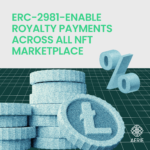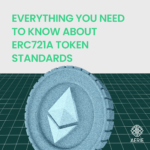Weekly Market Wrap – 4 July, 2022
Lessons learnt from the recent collapse of DeFi
With the increasing rate of inflation and governments needing to act before it was too late; the world financial markets had a downturn this year. Cryptocurrency market too has had a rough year and the collapse of multiple projects and funds sparked a contagion effect that has affected just about everyone in the space. As we look back here are 3 reasons for the collapse
- High level of leverage
The overuse of leverage in DeFi was one of the problems that plagued DeFi and CeFi platforms. This was evident as Celsius, 3AC and other platforms invested in DeFi began to unravel last month. The liquidations only exasperated the downtrend that many tokens were already experiencing, triggering a death spiral that spread to CeFi and DeFi platforms and a few centralized crypto exchanges. An on-chain protocol would help avert a situation like this as it would give full transparency. The onus falls on the users for being over-leveraged without a solid game plan on what to do in the eventuality of a market downturn. With high volatility in crypto asset prices maintaining reserves and liquidity is the key to survival. Unlike other financial sectors that are highly regulated and force to maintain certain liquidity rations – strict self-governance is of prime importance.
- Failure to generate sustainable revenue
In their attempt to attract users, high yields were offered at an unsustainable rate (APY), while there was insufficient inflow to offset payouts and provide underlying value for the platform’s native token. This essentially meant that there was no real value backing the token, which was used to payout the high yields offered to users. The high rates also resulted in investment in higher yielding projects with increased risk and lower liquidity. As users began to realize that their assets weren’t really earning the yields they were promised, they would remove their liquidity and sell the reward tokens. This, in turn, caused a decline in the token price, along with a drop in the total value locked (TVL), which further incited panic for users of the protocol who would likewise pull their liquidity and lock in the value of any rewards received.
- Poor Tokenomics
DeFi protocols often have an extremely high inflation rate which was used to lure liquidity. The high inflation is a result of the reward structure that is being offered through liquidity mining. High rewards are nice, but if the value of the token being paid out as a reward isn’t really there, then users are basically taking a lot of risk by relinquishing control of their funds for little to no reward. This largely ties in with DeFi’s revenue generation issue, and the inability to build sustainable treasuries. High inflation increases token supply, and if token value is not maintained, liquidity leaves the ecosystem. Hence, with a sudden drop in the token prices many DeFi ecosystems faced high redemption pressure coupled with poor liquidity which forced them to pause or cap the daily or monthly withdrawal amounts.
According to the CEO of FTX, Bankman-Fried, “There are some third-tier exchanges that are already secretly insolvent.” Because of the size of the hole in the balance sheet, regulatory concerns, or the fact that there is not much of a company remaining to be salvaged, backstopping these businesses would be impractical, he said. However, some analyst believe that with deleveraging coming to an end with major crypto firms, where their assets have been sold either willingly, in a rush, or via liquidation we might see better days. Two healthy signs for the industry that we are witnessing are – crypto entities stepping in to bail out struggling companies (FTX’s revolving credit and buyout offer to BlockFi). Secondly, Since May ’22, as per JP Morgan there has been about US$5 billion in VC funding to crypto firms; Dove Metrics estimates the amount to be US$8.6 billion for the same period. This is a healthy sign, that will help create some optimism into a badly battered industry. In more positive news the Bank of International settlement (BIS) has made a proposal to limiting the banks’ total exposures to “Group 2 cryptossets to 1% of Tier 1 capital”.
.
FTX and Ledn Compete for BlockFi
Days after FTX has given BlockFi a $250mm revolving credit facility in an attempt to bolster its balance sheets, there are talks that FTX exchange has made and offer to buy out BlockFi for US$ 25mm. Ledn a competitor of BlockFi has also joined the race to get a stake in the company. Ledn is to be leading a US$ 400mm funding round and also contribute US$50 million in equity. BlockFi has not confirmed this but has confirmed that it “is currently evaluating a number of opportunities to broaden its leadership in digital asset lending and beyond
ParaFi Finance is another company that may make another offer to BlockFi
Facebook entering WEB3
Meta formerly known as Facebook has will soon roll out a NFT feature in select countries and to select users. The feature for now will allows the user to connect their wallet and upload NFT’s as post where users can like, share and comment on. For now, only Ethereum and Polygon NFT’s will be allowed but soon NFTs from Solana and Flow will also be integrated.
DappRadar launches industry first Cross-Chain Staking
DappRadar has announced an industry-first cross-chain token staking mechanism, allowing users to claim their staking rewards on any blockchain and minimize the fees related to staking drastically. This is made possible by cooperating with the LayerZero protocol, which enables smart contracts to communicate across different chains. This will help remove barriers for cost-conscious users to participate in staking by eliminating high fees, thus democratizing financial inclusion. Users will earn the same APR for their staked assets across all blockchains, thereby eliminating the need to bridge assets themselves or pay the typical high Ethereum gas fees. DappRadar believes that the future of the blockchain industry will be multichain, cross-chain and interoperable. To ensure the DappRadar community has the most comprehensive choice possible, cross-chain staking will be enabled for every blockchain RADAR (native token of DappRadar) launches on, meaning it won’t be limited to only EVM-compatible chains. The mechanism will also ensure a smooth user experience on all chains.
OpenSea – data breach
OpenSea notified all users that they faced a data breach, where in email-ids of users were shared to with an unauthorized third party. OpenSea has asked its users to be on alert for any phishing attempts. Earlier in May this year the company’s Discord server was breached and there were multiple phishing attempts that lead to several user wallets being stolen. The worst was in January when an exploit allowed hackers to sell NFT’s without the owner’s consent. OpenSea did return around US$ 1.8million, however the overall impact of the hack is unclear.









